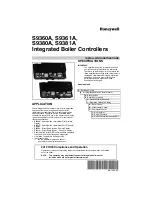
29
6-1
Water heating energy efficiency of the water heater
Water heating energy efficiency of the assembly in
average climate conditions
Water heating energy efficiency class of the assembly in average climate conditions
Water heating energy efficiency class in colder and hotter climate conditions
Colder: - 0.2 x =
Hotter: + 0.4 x =
Stated load profile:
Solar contribution
From the board of the solar device
1
%
‘I’
2
%
+
( 1.1 x ‘I’ - 10 % ) x ‘II’ - ‘III’ - ‘I’ =
Auxiliary electricity
3
%
G
F
E
D
C
B
A
A
+++
A
++
A
+
< 27 %
< 27 %
< 27 %
< 28 %
≥ 27 %
≥ 27 %
≥ 27 %
≥ 28 %
≥ 30 %
≥ 30 %
≥ 30 %
≥ 32 %
≥ 33 %
≥ 34 %
≥ 35 %
≥ 36 %
≥ 36 %
≥ 37 %
≥ 38 %
≥ 40 %
≥ 39 %
≥ 50 %
≥ 55 %
≥ 60 %
≥ 65 %
≥ 75 %
≥ 80 %
≥ 85 %
≥ 100 %
≥ 115 %
≥ 123 %
≥ 131 %
≥ 130 %
≥ 150 %
≥ 160 %
≥ 170 %
≥ 163 %
≥ 188 %
≥ 200 %
≥ 213 %
M
L
XL
XXL
3
2
3
2
%
%
The energy efficiency of the set of products indicated in this sheet may not reflect the actual energy
efficiency after installation since such efficiency is affected by additional factors, such as the heat loss
in the distribution system and the size of the products compared to the size and features of the building.
Facsimile for filling in the domestic hot water production system package fiche.
6
PARAMETERS FOR FILLING
IN THE PACKAGE FICHE.
Should you wish to install a unit, starting from
the heat pump boiler Rapax 200-300 V3 or
Rapax 200-300 Sol V3, use the diagram shown
on Fig. 6-3.
To complete it properly, fill the relevant spaces (as
shown in the assembly sheet facsimile Fig. 6-1)
with the values shown in tables Fig. 6-2.
The remaining values must be obtained from the
technical data sheets of the products used to make
up the assembly (e.g. solar devices, integration
heat pumps, temperature controllers).
Use board Fig. 6-3 for “assemblies” related to the
domestic hot water function (e.g.: water
solar thermal system).




































